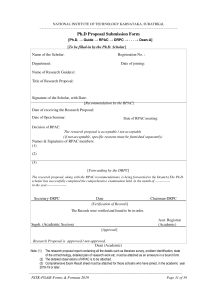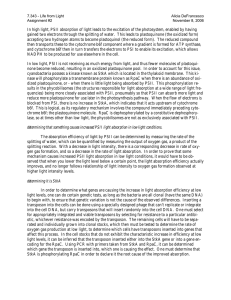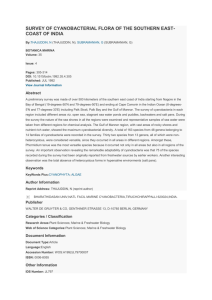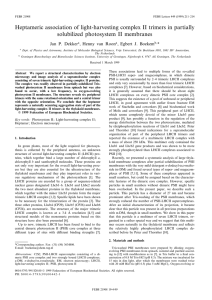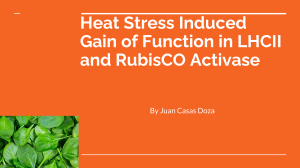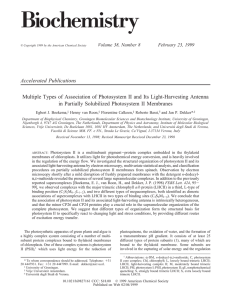7.343 Life from Light: Photosynthesis Assignment 2 Due Session 10
advertisement
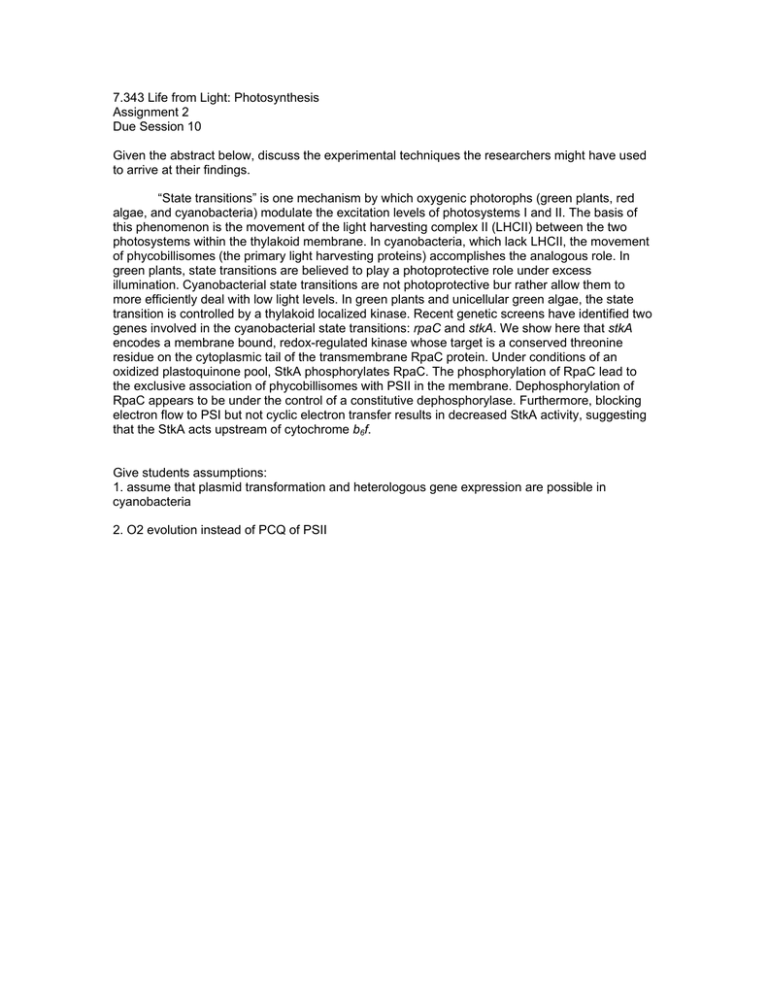
7.343 Life from Light: Photosynthesis Assignment 2 Due Session 10 Given the abstract below, discuss the experimental techniques the researchers might have used to arrive at their findings. “State transitions” is one mechanism by which oxygenic photorophs (green plants, red algae, and cyanobacteria) modulate the excitation levels of photosystems I and II. The basis of this phenomenon is the movement of the light harvesting complex II (LHCII) between the two photosystems within the thylakoid membrane. In cyanobacteria, which lack LHCII, the movement of phycobillisomes (the primary light harvesting proteins) accomplishes the analogous role. In green plants, state transitions are believed to play a photoprotective role under excess illumination. Cyanobacterial state transitions are not photoprotective bur rather allow them to more efficiently deal with low light levels. In green plants and unicellular green algae, the state transition is controlled by a thylakoid localized kinase. Recent genetic screens have identified two genes involved in the cyanobacterial state transitions: rpaC and stkA. We show here that stkA encodes a membrane bound, redox-regulated kinase whose target is a conserved threonine residue on the cytoplasmic tail of the transmembrane RpaC protein. Under conditions of an oxidized plastoquinone pool, StkA phosphorylates RpaC. The phosphorylation of RpaC lead to the exclusive association of phycobillisomes with PSII in the membrane. Dephosphorylation of RpaC appears to be under the control of a constitutive dephosphorylase. Furthermore, blocking electron flow to PSI but not cyclic electron transfer results in decreased StkA activity, suggesting that the StkA acts upstream of cytochrome b6f. Give students assumptions: 1. assume that plasmid transformation and heterologous gene expression are possible in cyanobacteria 2. O2 evolution instead of PCQ of PSII

